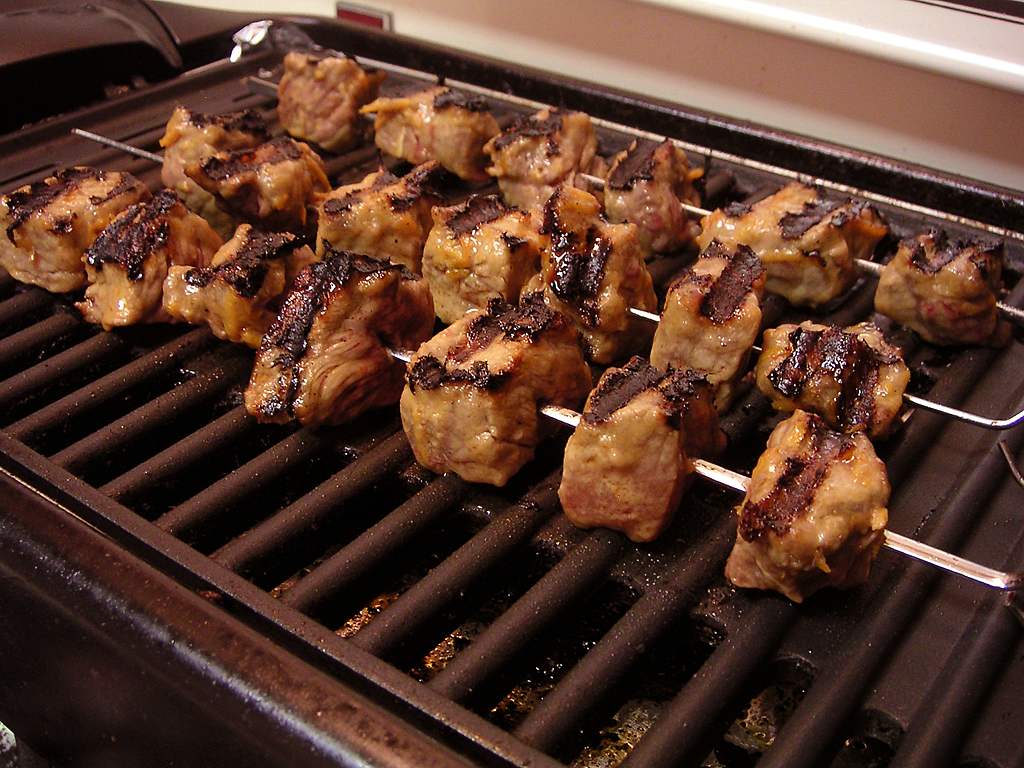There are two types of barbecue to consider, traditional charcoal barbecues and gas powered barbecues. The type you choose will, of course, depend on your budget and preferences. Charcoal barbecues are cheaper to buy than gas barbecues but tend to be more expensive to run. In addition, if you are concerned about the environment you should only use charcoal from sustainable sources and this might be hard to find. Almost all the charcoal sold, estimated to be over 97%, is from non-sustainable sources such as tropical rainforests.
Charcoal barbecues are simpler in construction than gas barbecues as all that is really needed is a vented metal bowl to hold the charcoal and a rack for the food. They are harder to light than gas barbecues but for many people that is part of the fun! Many people also enjoy the smell and general ambience of a traditional charcoal barbecue. Charcoal barbecues are small and portable and very suitable for taking on camping trips.

Gas barbecues are more expensive to buy but are very easy to light and come with a range of features to make cooking easy and fun. They may have multiple burners that are easy to control and side burners for other dishes, such as pasta or rice dishes that need to be boiled rather than grilled. They are also bulkier than charcoal barbecues and less easy to store.
Barbecue Tips
* Charcoal is ready to be used when it glows red inside and is ash grey outside.
* Place food on a hot rack in the center of the grill. It will stick at first then become looser when the food is seared.
* Slow cooking food should be seared on the hottest part of the grill then moved to the edges or the rack raised to cook slowly and thoroughly all the way through. Slow cooking food includes meats and poultry.
* Fast cooking foods should be seared and cooked in the hottest part of the grill. fast cooking foods include fish and vegetables.
* Regularly turn the food and ensure it is thoroughly cooked all the way through before you serve it.
Flavouring
When food is cooking on the grill, juices drip onto the hot charcoal and the smoke released gives the food the characteristic smoky, barbecue flavor. In order to enhance the flavor marinades are usually used to imbue flavor into the food and also to coat the food so that the marinade caramelises in the heat and adds to the flavor. Marinades were traditionally used to tenderise the meat and marinades which contain acidic juices such as lime juice, wine or yoghurt break down the meat proteins. Oils are also used in a marinade to keep the food moist during grilling. Marinades for fish and vegetables do not need tenderisers.
Safety
Always keep children and pets away from barbecues and have a bucket of sand handy just in case you need to quench the barbecue in an emergency.
The main consideration when grilling food on a barbecue is to avoid any chance of food poisoning. This can occur from allowing frozen food to defrost at room temperature when bacteria can grow on the outer, defrosted parts of the food while the rest is still frozen. Always defrost completely in a refrigerator before using. Never leave cooked or partially cooked food at room temperature as bacteria can double in number in as little as thirty minutes on a warm summer day.
Poultry can contain salmonella and campylobacter and meats can contain E Coli. Contamination can easily be transferred from uncooked food to cooked food by direct contact or by using utensils first on the uncooked food then on the cooked food. Never use the same utensils or working surfaces for both.
Safety Points
* Defrost all frozen poultry, meat and fish in a microwave (fast) or a refrigerator (slowly)* Never place raw food next to cooked food or use the same work surfaces or utensils.* Thoroughly defrost all food before grilling and check to ensure that it is cooked all the way through before serving.
No comments:
Post a Comment